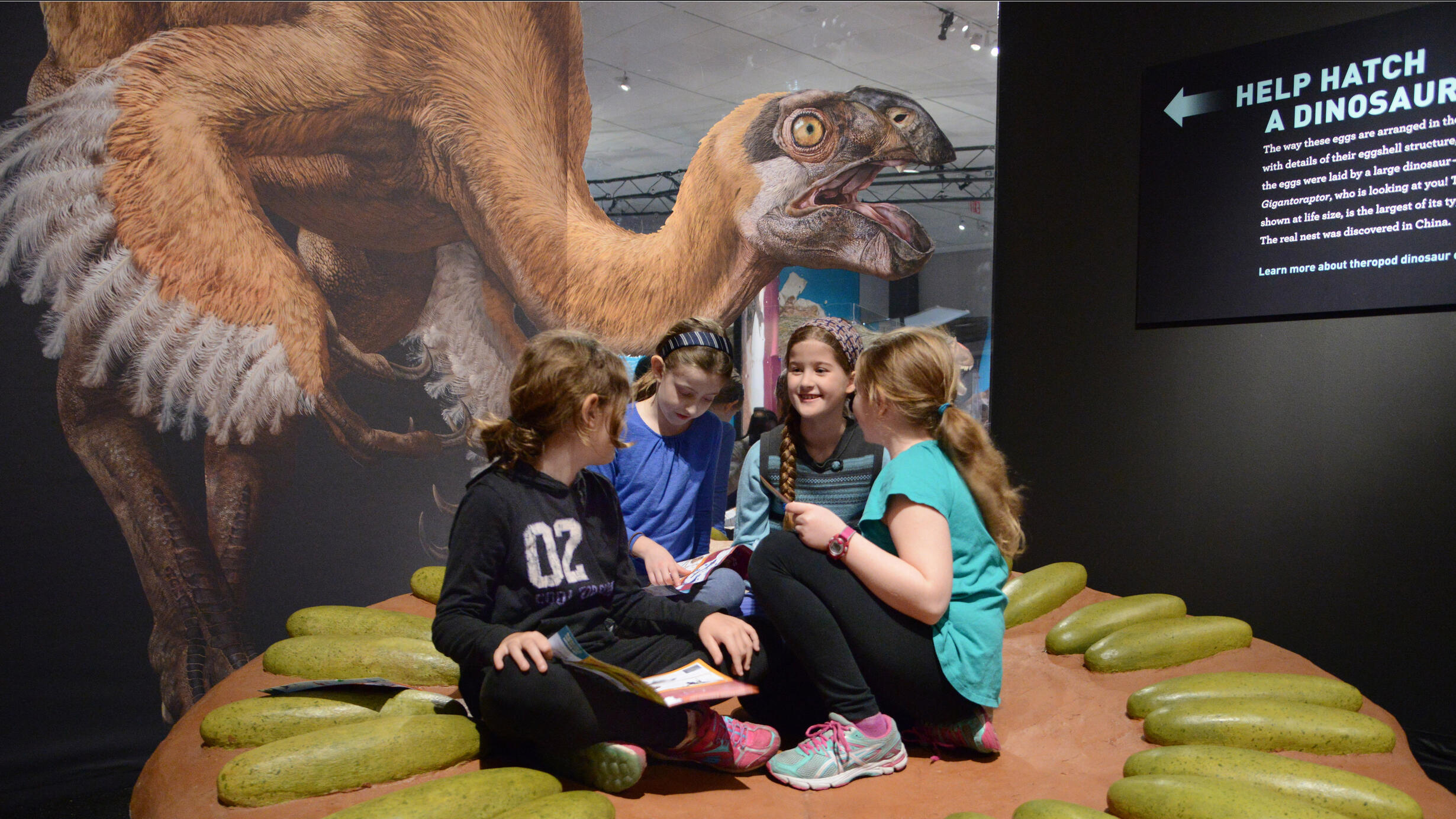Dinosaur Nests, Eggs, and Babies
Part of the Dinosaurs Among Us exhibition.

If you said “birds,” you’re right. If you said “crocodiles,” that’s right, too. And if you said “some kinds of dinosaurs,” right again.
Courtesy of Wikimedia Commons
Shared behaviors like these are evidence of common ancestry. And today, scientists use observations of living relatives to breathe life into creatures extinct for over 65.6 million years. That includes animals like Citipati osmolskae, an oviraptorid dinosaur.
©AMNH/M. Ellison
In Dinosaurs Among Us, visitors can see a cast of a remarkable fossil of a Citipati positioned over the center of its nest, its forearms spread to protect its eggs. Today, many birds assume this same position when brooding their eggs.
Courtesy of Wikimedia Commons
A complete life support system that allowed the development of life on land, the eggshell holds water and food for the developing embryo, while letting oxygen in and carbon dioxide out. Similarity between the eggshell structure of some groups of dinosaurs and living birds are now another link in the chain of evidence connecting them.
© AMNH
This oviraptorosaur became a fossil while carrying two eggs—one in each egg tube. That means that as far as reproduction, these theropod dinosaurs were halfway between their crocodile ancestors and their bird cousins. They had two egg tubes, like crocs, but only one egg in each, like modern birds. Had this dinosaur lived, her eggs would have been paired side-by-side in the nest.
Zhao Chuang; courtesy of Peking Natural Science Organization
One extraordinary fossil on view in Dinosaurs Among Us preserves a recently hatched troodontid, pictured above in an artist's rendering. This animal belongs to a group of small, feathered, non-bird dinosaurs with large brains. The fossilized specimen sits atop the eggs of what would have been its nest mates. In this fossil, the eggs are not paired, suggesting the parent had only one egg tube like modern birds, as opposed to the two present in most other dinosaurs.
Lead image: Visitors can help hatch a dinosaur in the exhibition. ©American Museum of Natural History/R.Mickens.